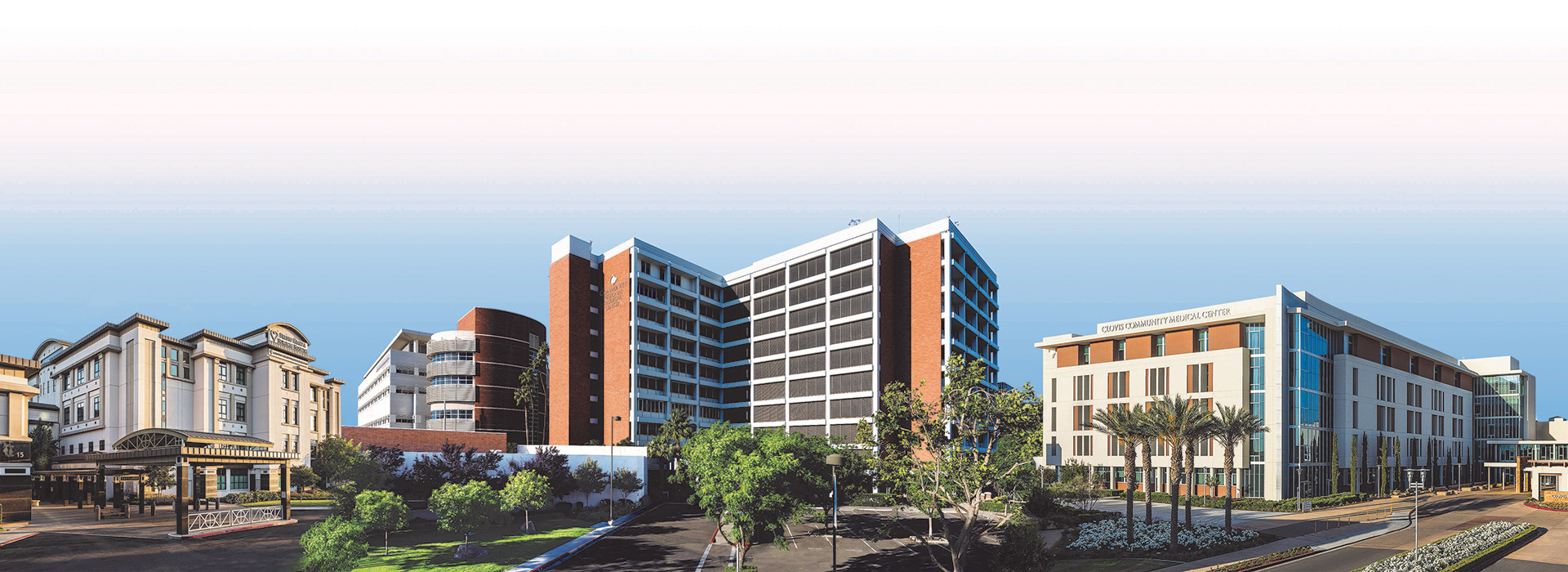It has new paint, carpet, equipment, an outpatient lab and sweeping downtown Fresno views, but the excitement of the new East Medical Plaza on the Community Regional Medical Center campus goes beyond the look of the building and floors. The new University of California, San Francisco physician tenants are working together across specialties to provide treatments never before offered in the Fresno region and to give patients the chance to participate in nationwide clinical research trials.
 The building showcases an aggressive and novel collaborative approach among Community Medical Centers, UCSF Fresno Medical Education Program and University Centers of Excellence. The 88,000-square-foot East Medical Plaza is located at 2335 Kashian Way on the east side of the hospital’s 58-acre campus, adjacent to the UCSF Fresno building.
The building showcases an aggressive and novel collaborative approach among Community Medical Centers, UCSF Fresno Medical Education Program and University Centers of Excellence. The 88,000-square-foot East Medical Plaza is located at 2335 Kashian Way on the east side of the hospital’s 58-acre campus, adjacent to the UCSF Fresno building.
“The building’s design and purpose is to provide first-class office space on our campus to allow specialists the convenience of practicing in close proximity to the inpatient facility,” said Jim VanDeVelde, director of business development and outreach for Community Regional.
There will be an elevated covered walkway that will connect the back of the building to the trauma critical care building at the medical center on the second floor, VanDeVelde said. The old medical office building (at 110 Valeria St.) will also be connected to the East Medical Parking Plaza by the same walkway on its second floor.
A highlight of the building is the 23,000-square-foot third floor, occupied by University Neurology Associates, University Neurosurgical Associates and the Neuroscience Outpatient Rehabilitation Center. It brings together neurologists, neurosurgeons and related services to provide evaluation and treatment in one location for patients.
“We are advancing the treatment options available to patients in the Central Valley to eliminate the need to travel outside the area for care,” said Phyllis Baltz, chief operating officer at Community Regional.
The two primary practices feature six neurologists (with a seventh starting Feb. 1) and five neurosurgeons, with more physicians on both sides being recruited. The new staff includes the Valley’s first interventional neurologist, Dr. Lucian Maidan, who treats stroke and aneurysms much like a cardiologist by using a catheter to target the blocked blood vessel.
Chief of neurology Dr. Jeffrey Rosenfeld said there is a large need for the services and he is excited to offer Central Valley residents something that has not been available before. “Patients with progressive neurological diseases often feel that there are no treatment options, leading to a growing sense of despair,” Dr. Rosenfeld said. “There are, in fact, hopeful alternatives for treatment at all stages of disease progression. Now, they are available in the Central Valley.”
The subspecialty programs within the office include stroke and vascular neurology, neuromuscular disorders/ALS, epilepsy, multiple sclerosis and cognitive behavioral diseases such as Alzheimer’s disease. A program for Parkinson’s disease will be available soon. There are also occupational, physical, speech and respiratory therapists on staff, along with a nutritionist and social worker.
“The concept behind this program,” Dr. Rosenfeld explained, “is a type of comprehensive care under one roof that results in a peace-of-mind for the patient, not often experienced in certain progressive neurological conditions. It’s very powerful. We offer targeted, aggressive and proactive care at the time it is needed.” He added that having the neurosurgeons and neurologists on the same floor will lead to more collaboration in diagnosis and treatment.
There are currently four active clinical trials, with more to come soon – which will be offered as part of the treatment plan for some patients.
“The biggest disability patients come to us with is fear. They’re afraid of what is going to come next,” Dr. Rosenfeld said. “If we can immerse them in a program where they not only feel well cared for, but they see that no matter what curve ball their disease throws, there is somebody who is going to respond, then confidence replaces their fear and the benefits of our treatments become very profound. There is no question in my mind that this is a very powerful and effective way to treat patients.”
The office features 27 exam rooms. The design of the third floor specifically accommodates needs of neurology and neurosurgical patients. Some rooms are carpeted to help with traction, exam rooms have been enlarged to allow for more family members to be present and there are family consultation rooms. Doorways are wider to accommodate wheelchairs and other equipment, and there are special dictation rooms for the physicians, right next to the exam rooms.
This story was reported by Bonni Montevecchi. She can be reached at MedWatchToday@communitymedical.org.



_8.jpg)


